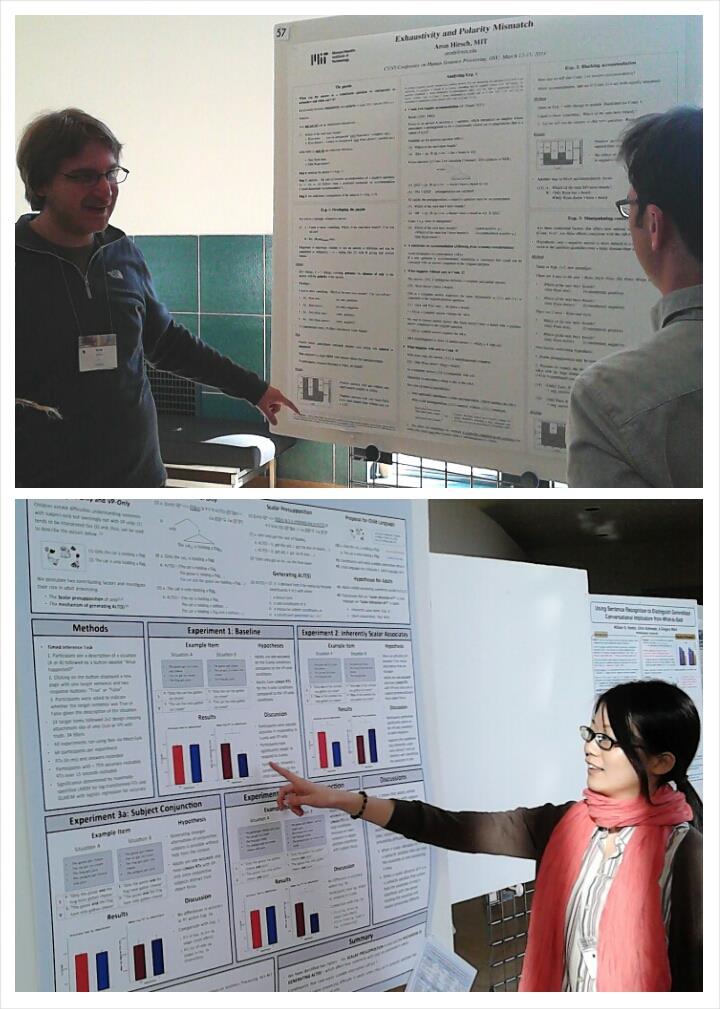Speaker: Adam Szczegielniak (Rutgers)
Title: The syntax of the semantics of ellipsis
Date/Time: Thursday, Mar 20, 12:30-1:45p
Location: 32-D461
The talk argues for an analysis of ellipsis that combines:(i) the licensing of the antecedent-anaphor relationship in elided structures via mutually entailing Givenness, modulo focus (Rooth 1992, Merchant 2001) with (ii) a syntax based phase driven account of ellipsis (Rouveret 2012, Chung 2013, Boskovic 2014). The connection between the syntax and semantics of ellipsis will be the observation that the lower bound of a Givenness Domain is encoded in the syntax in the form of a [G] operator that can trigger overt XP movement (Kucerova 2012).
Data will come from Polish and other Slavic VP (1) and TP (2) ACD structures (Szczegielniak 2005, Craenenbroeck & Liptak 2006).
| 1. | Ja | bede | czytal | [kazd | ksiazke | [co | ty | bedziesz]] |
| I | will | read | every | book | that | you | will |
| ‘I will read every book that you will.’ |
| 2. | Ja | bede | czytal | [kazda | ksiazke | [co | ty]] |
| I | will | read | every | book | that | you |
| ‘I will read every book that you will.’ |
Based on the interaction of both (1) and (2) with (i) Negation (Witkos 2008, Zeijlstra 2013), (ii) post verbal subjects (Zubizaretta 1998, Gallego 2013), (iii) Subject in-situ (Alexiadou & Anagnostopoulou 2006), (iv) verb stranding (Gribanova 2013), (v) contrastive vs. presentational focus and topic (Neelman & Titov 2009, Konietzko & Winkler 2010),
the following claims will be put forward and defended:
A. Ellipsis is triggered by an [E] feature that can be present on a phase head H (Gengel 2008). The feature targets H’s complement and marks Given strings as lacking PF (provided the string is in a mutually entailing relationship with the antecedent modulo focus, Merchant 2001).
B. Phase extension (Den Dikken 2007) is carried out via head movement, but is ‘closed’ when head movement is preceded by XP movement to a phase edge.
C. XP Movement to ‘close’ a vP phase results in XP Focus interpretation, subsequent movement can generate contrastive readings of the displaced XP.
D. Givenness movement is phase based, but Givenness domains are established via Functional Application (Kucerova 2012).
E. MaxElide (Takahashi & Fox 2005, Hartman 2011) is a condition on the placement of [E] features.
F. VP raising to Spec TP is a form of Predicate Inversion (Bailyn 2004, Den Dikken 2006) and can be driven by Givenness, that in turn feeds ellipsis.
My proposal that syntactically constrained movement can ‘feed’ an ellipsis site, combined with existing evidence that movement can ‘evacuate’ constituents from ellipsis sites (Vincente 2010), supports the claim that elided strings not only have syntactic architecture, but also that this structure participates both in syntactic and semantic computations that feed discourse.
